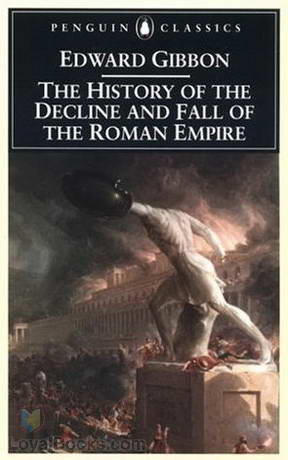History of the Decline and Fall of the Roman Empire, Vol. IV |
|---|

Edward Gibbon's fourth volume of History of the Decline and Fall of the Roman Empire is a masterful piece of historical literature that delves deep into the tumultuous events of the empire's final days. Gibbon's attention to detail and meticulous research is apparent throughout the book, as he expertly navigates the complex political and social landscape of the time.
One of the standout features of this volume is Gibbon's ability to connect historical events to broader themes and trends, providing readers with a nuanced understanding of the factors that contributed to the empire's decline. His prose is elegant and compelling, making even the most complex subjects accessible to a wide audience.
Overall, History of the Decline and Fall of the Roman Empire, Vol. IV is a must-read for anyone interested in ancient history. Gibbon's exhaustive research and engaging writing style make this volume a powerful exploration of one of the most significant events in Western history. Book Description:
Proceeding at a brisk pace, the original fourteen volumes describe debauched emperors, corrupt practices, usurpers and murderers, bloody battles, plunder and loot, barbarian hordes, tumultuous events like the Crusades and invaders like Genghis Khan and many more. Later, it was condensed by various editors to make it available to more readers. Much of it seems like a modern battle epic or a gory scary movie with endless passages depicting power struggles, blood-drenched paths to the throne, ruthless killing of innocent women and children and the final disappearance of a mighty empire.
The Decline and Fall of the Roman Empire was written by an English historian who was inspired to write it when he undertook the Grand Tour and visited Rome as a young man in 1762. The book eventually took more than 20 years to complete and was received with both bouquets and brickbats. The Church banned it quite a few times as it was considered to have blasphemous passages about the Church. Gibbon was attacked by many devout Christians as a “paganist.”
Setting the starting point with the Emperor Augustus in 27 BC, Gibbon pursues the Romans relentlessly on to their final defeat in Constantinople in the 15th Century AD with the rise of the Turkish Ottomans. Stretching across North Africa, Europe and the Middle East as well as some parts of modern-day Asia, the Roman Empire was a tremendous human enterprise. Successively added to by emperor after emperor, it finally disintegrated and ceased being the “empire without end.”
Gibbon initially planned to write a history of the city of Rome but found himself so immersed in the subject that it gradually grew into a work about the empire itself. He provides interesting theories for the collapse of the Empire. The rise of Christianity, Islam and the attacks of various wild and brutal hordes contributed to the fall of this mighty Colossus.
Far from being dry and scholarly, Gibbon's style is detached yet lyrical. Full of ironic statements and opinions, the book appeals to historians and modern-day readers. There are interesting parallels to be drawn from present day world affairs and many lessons to be learned from this magnum opus.
|
| Book sections | ||
|---|---|---|
| Genres for this book |
|---|
| History |
| Non-fiction |
| Links related to this book |
|---|
| Wikipedia – Edward Gibbon |
| Wikipedia – History of the Decline and Fall of the Roman Empire |
| eBook Downloads | |
|---|---|
|
ePUB eBook • iBooks for iPhone and iPad • Nook • Sony Reader |
Kindle eBook • Mobi file format for Kindle |
|
Read eBook • Load eBook in browser |
Text File eBook • Computers • Windows • Mac |
| Review this book |
|---|